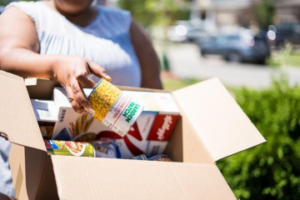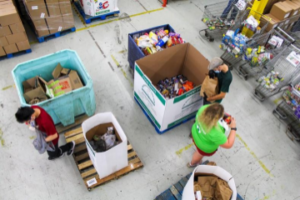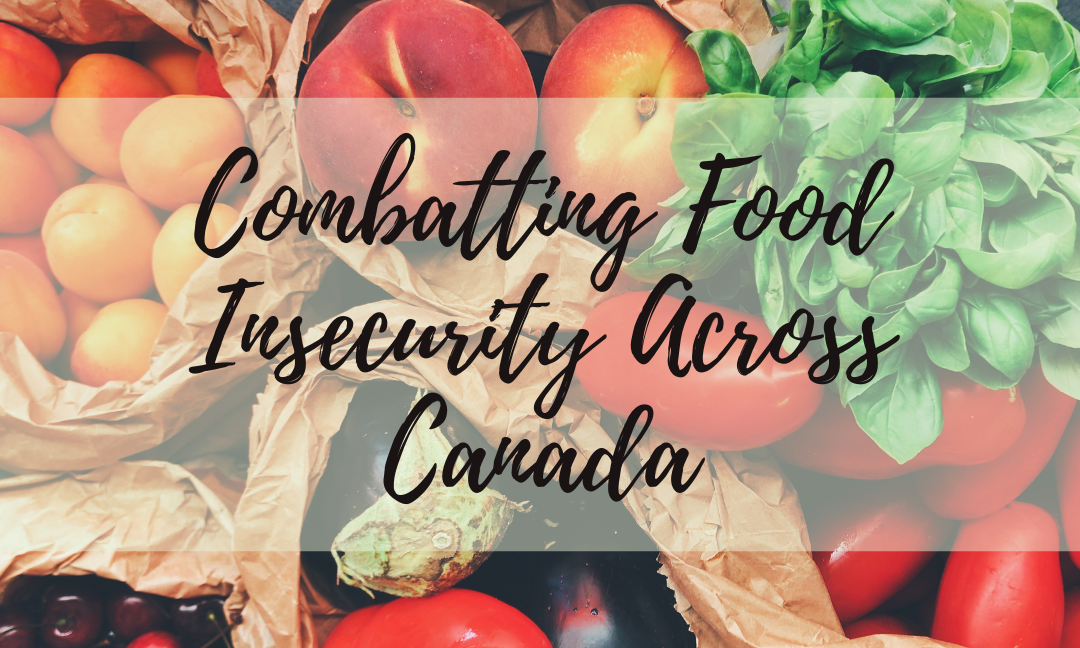Written by: Fatimah Gomez
“Mama, I’m still hungry,” six-year-old Johnny whimpers after licking the last grain of rice off of his spoon.

Photo credit: Getty
“I know you’re hungry, honey, but that’s all we have,” his mother responds in a strained voice.
Johnny’s little fingers clenched tightly at his shirt. “But my tummy is going to start hurting again.”
Twenty-three-year-old single mother Belle, drops her forehead in her palms as she sits at the old, unbalanced dinner table. Her paycheck won’t be coming in until next Friday, and she can’t afford to buy any more rice with all the money going towards their increasing rent. She doesn’t know what to do anymore. She feels like crying.
Just half a year ago, approximately “one in seven Canadians” were living with food insecurity as their constant companion, just like single mother Belle (Statistics Canada). What exactly did this look like? Food-insecure households have inadequate access to food, making families and individuals miss meals and go days in painful hunger. In a poll conducted in 2017 by PROOF, they found that the highest rates of food insecurity were in households that “identified as Indigenous or Black”, with Nunavut having the highest rates.
Not having sufficient access to food impacts the development of children both physically and mentally. Children who don’t have access to food have low nutrition, and experience nutrition deficiencies. With only a poor diet to fuel their growth, a child’s body will never grow into strong muscles, healthy bones and a well-working body system. They tend to have compromised immune systems, which results in a higher risk for diseases and illnesses. These children may be unable to pay attention during school, experience hyperactivity, and have a lower sense of self-esteem. To sum up, poor access to food results in an unhealthy childhood development. In adults, reports show that they experience “poorer physical health and are more vulnerable to a wide range of chronic conditions” (PROOF). For adults, the burden for not being able to have enough food on the table for their family can be overwhelming. A natural stress response includes a weakened immune system which can easily lead to various health problems, as well as “depression, anxiety disorder, mood disorders, or suicidal thoughts” (PROOF).

Photo credit: The Mississauga Food Bank
Now, how exactly is the government putting action into helping Canadians struggling with this reality? The Canada Child Benefit (CCB) supports families with children under 18, by supplying money to applicants which are determined by income size and number of children. Recently, the government recognized the severity of COVID-19’s effects on food-insecure households and approved up to $100 million dollars for the Emergency Food Security Fund. This money was distributed to organizations which include but are not limited to Food Banks Canada, the Salvation Army and Community Food Centers Canada. These organizations use these funds to purchase foods and keep the food banks running across the country.

Photo credit: The Mississauga Food Bank
On a more local level, food banks in our cities continue to adapt to changes as COVID-19 makes accessing food harder than usual. It has been difficult to find enough volunteers to work at the food bank and get the food distributed to those who need it. That’s where our community comes into the picture. By donating a generous amount of money and food to our local food banks, or by volunteering, we can be of assistance to those who need it most as the province opens up. Chances are you’ll have a food bank in your city that you didn’t even know about. For example, the Mississauga Food Bank in my area, are not directly in contact with individuals who need food, but rather, supplies a huge network of food banks across the city and helps an underprivileged individual get in easy contact with food programs that are near them. Imagine how much of an impact you can make just by simply ensuring that a child like little Johnny won’t go to bed with a hungry tummy. Let’s intend to make that difference today!
Here’s a link to find your local food bank!
Content Sources
Statistics Canada. (2020, December 16). The Daily — Food insecurity and mental health during the COVID-19 pandemic. https://www150.statcan.gc.ca/n1/dailyquotidien/201216/dq201216d-eng.htm
PROOF. (2018). Household Food Insecurity in Canada. https://proof.utoronto.ca/
Image Sources
2. https://www.canadahelps.org/en/charities/the-mississauga-food-bank/
3. https://www.canadahelps.org/en/charities/the-mississauga-food-bank/

